A mother Canada goose shelters her babies.
(photo by Lucy of Manchester, UK via Wikimedia Commons. Click on the image to see the original.)
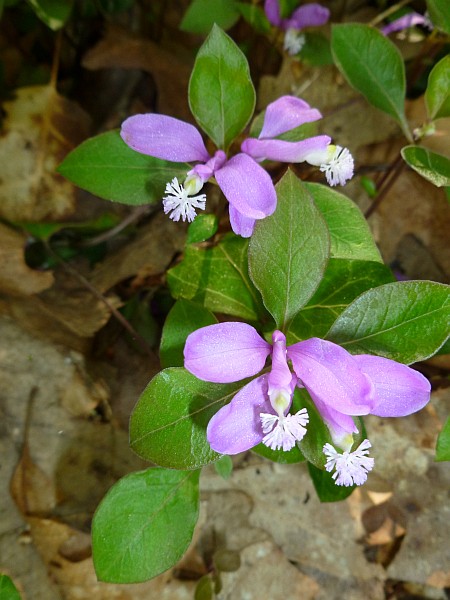
Here’s another beauty blooming now in western Pennsylvania.
Fringed polygala is only 3 to 6 inches tall so you’ll have to look closely to find it.
Dianne Machesney saw this one along the Butler Freeport Trail near Monroe Road. Today I’m going to go see it.
(photo by Dianne Machesney)
Many of us are know that peregrines are great hunters but we don’t often get to see the amazing fishing skills of ospreys.
This video from Arkive.org is certain to impress you. Just look at the size of that last fish!
And, did you know…?
At the coast osprey nests are often within sight of each other. Like a loosely organized colony, they watch each other to see who returns with a fish and follow the successful hunters out to hunt the same area.
Osprey can even identify the fishes held by others and are more likely to follow a neighbor who returns with a fish that lives in schools. Schooling fish are never alone. There’s more where that came from!
(video from Arkive.org on YouTube)
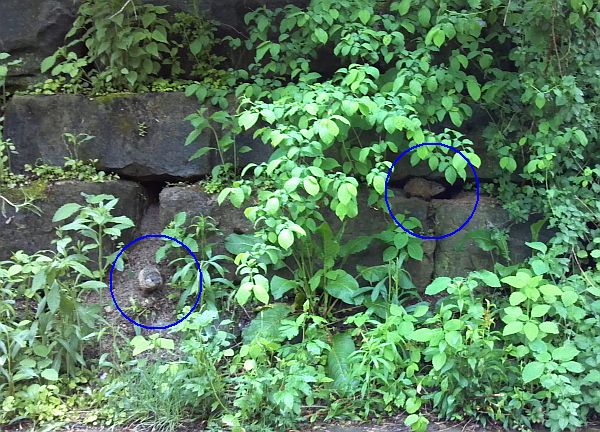
I walked home through Schenley Park on Tuesday hoping to see a lot of birds after the rain. As usual the birds were not very active in the evening but I found something so cute it made me laugh: two baby woodchucks!
I call them woodchucks because the word “groundhog” doesn’t fit something so cute. They were compact and furry, the size of large guinea pigs and very naive.
At first they were oblivious to my presence but when I paused to watch they froze. I moved again and they retreated into their den but they were so anxious to come out and play that they didn’t wait long enough for me to leave. I took their picture with my cellphone when they came out again.
Extremely cute! But they’ll have to learn to avoid predators or they’ll become breakfast for the red-tail babies.
(photo by Kate St. John)
p.s. I went back on Wednesday with a nicer camera but the woodchucks didn’t make an appearance.
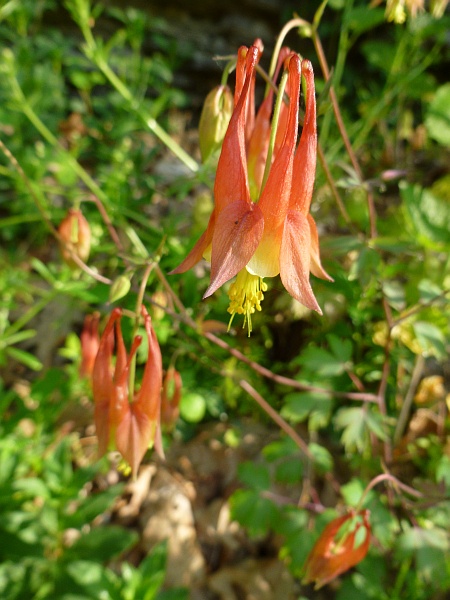
The big splash of spring wildflowers is over but there are some treats out there if you know where to look.
Last weekend Dianne Machesney visited the Butler-Freeport Trail and found wild columbine blooming. It’s also blooming at the Magee Marsh boardwalk in northwestern Ohio, the first time I’ve ever seen it there.
The hot weather in March put the plants ahead of schedule in Ohio just as they are here. Maybe I’ve finally seen what Magee Marsh vegetation looks like just after the warblers — and birders — are gone.
(photo by Dianne Machesney)
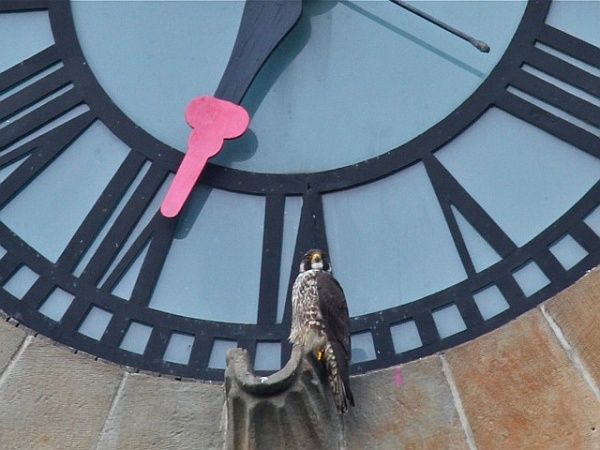
Back in the 1990’s when I attended the Rachel Carson Institute I learned that an important part of nature observation is to make a list of the species I encounter. This creates a good historical record of those present and can be compared over time to discover which species disappeared.
During birding vacations list-making morphs into a challenge. How many species did I see? Did I miss an easy one?
At the Biggest Week in American Birding peregrine falcons aren’t easy to tally because they’re random fly-bys but before I left for northwestern Ohio I did my homework. If I didn’t see a peregrine in the marshes I knew where to find one.
Sure enough by Sunday night I still hadn’t seen a peregrine and I was leaving Monday without birding so I stopped by the Ottawa County Courthouse in Port Clinton. I had read that a pair is present this spring. To be honest, I would have stopped there anyway because I can’t resist the opportunity to see a peregrine.
And here she is, perched below the courthouse clock. She looks like a sub-adult to me. Maybe she’ll raise a family next year in the nestbox provided on the south face.
I tipped off my friends Chuck & Joan Tague and Margie Kern so they could tally a peregrine too. Thanks to Chuck for the photo.
(photo by Chuck Tague)
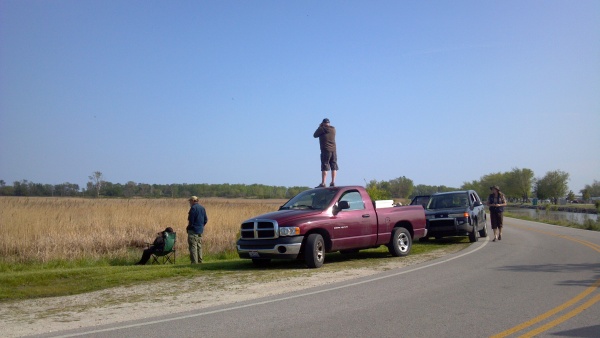
People cue on the actions of others. During The Biggest Week in American Birding the cues are swift and intense.
On Saturday afternoon as I left Metzger Marsh I found a guy so intent on a bird that he was willing to scratch the finish on his truck to see it.
Walking on the car is forbidden in my family. This guy was breaking all the rules so I pulled over to take his picture.
Immediately, his sentinel position prompted others to stop too. “What are you looking at?”
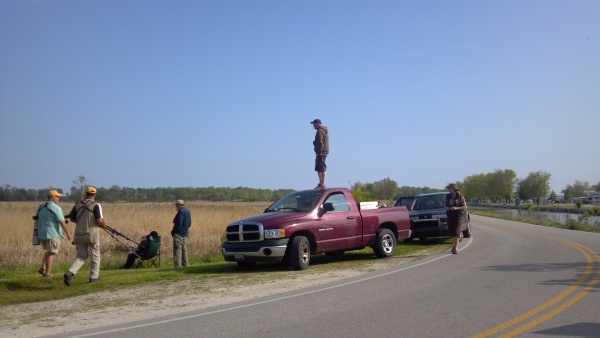
In 60 seconds he had drawn a crowd.
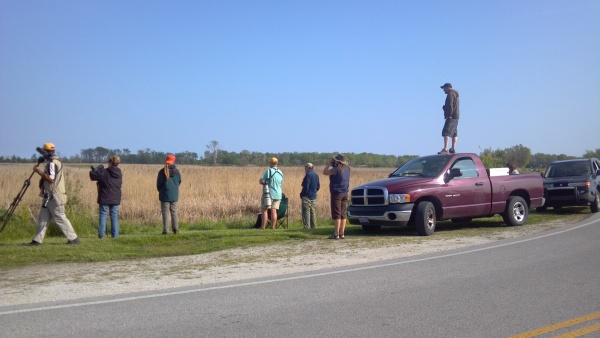
I don’t know what prompted all the excitement. I was too hungry and “birded out” to ask. 😉
(photos by Kate St. John)

Since I witnessed an aerial dog fight on Wednesday and saw two wing feathers askew on one of the Pitt peregrines I wondered whose wing was hit and if the intruder was still present.
Thanks to the dedicated falcon watchers on the Pittsburgh Falconuts Facebook page we now have some answers.
Thursday and Friday Peter Bell and John English stopped by the area and reported on peregrine activity — or lack of it. Saturday afternoon Donna Memon and Mary DeVaughn watched the Cathedral pair from Schenley Plaza.
They report that E2 has the odd wing feather but it doesn’t seem to be hampering him. No intruder was present, so maybe that third peregrine is gone forever.
As @PittPeregrines says on Twitter, “Talons crossed!”
UPDATE, 7 May 2012, 7:00am:
On Sunday John English and Anne Marie Bosnyak watched at the Cathedral of Learning. The weather was good and they saw both adults flying. Notice the blip on the antenna. That’s Dorothy!
John wrote, “Some nice aerial maneuvers. No prey drops or intruders. A great day to be a falcon!”
(photo by John English)
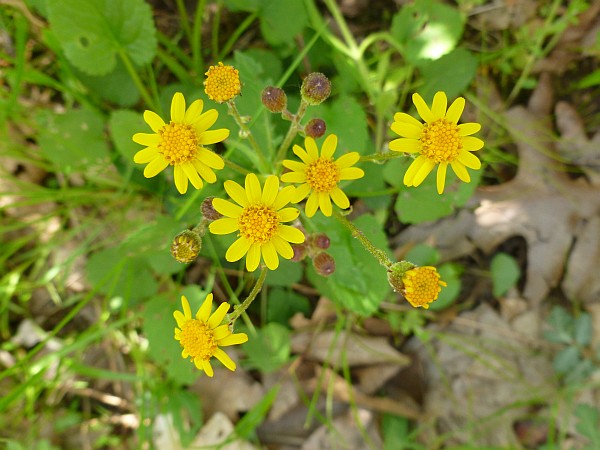
Have you ever noticed how many things are yellow in the Spring?
Many warblers are yellow — it helps them hide among yellow-green leaves. Many flowers are yellow — their pollinators are attracted to that color.
Golden ragwort (Packera aurea) is yellow too.
It’s blooming now in western Pennsylvania.
(photo by Dianne Machesney)
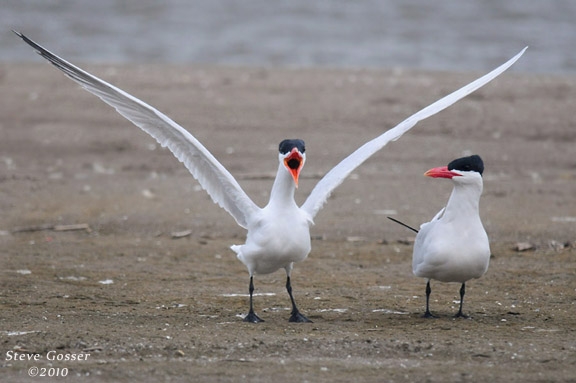
Here on Lake Erie’s shore there are a lot of water birds I don’t see at home.
Terns, for instance.
In Pittsburgh we only see a few terns per year during migration and you have to go out of your way to do so. Dedicated birders wait at Dashields Dam on the Ohio River in early April for terns and gulls to fly by. (I’m not that dedicated.)
Terns are more plentiful in northwestern Ohio. Common and black terns breed there, though in small numbers. Forster’s and Caspian terns pause in Ohio on the way to their breeding grounds.
Since I don’t often see terns I have to think to identify them. Caspians require the least thought because they’re easy. They’re the largest tern in the world — the size of a herring gull — and they have large orange beaks that look like a carrot attached to their faces.
If they’re barking I know them right away. To me they sound like wild parrots. Click here to hear.
This one barked at Steve Gosser when he took his picture.
By the way, if you’re up near Foxburg in Clarion County, stop by the Red Brick Gallery (17 Main Street, Foxburg, PA 16036) to see a display of Steve Gosser’s beautiful bird photos. Gallery hours are Fridays 4-8pm, Saturdays 12-8pm, and Sundays 1-6pm. The show runs through May 28.
Here’s the show announcement. Sorry I missed the opening last weekend.
(photo by Steve Gosser)